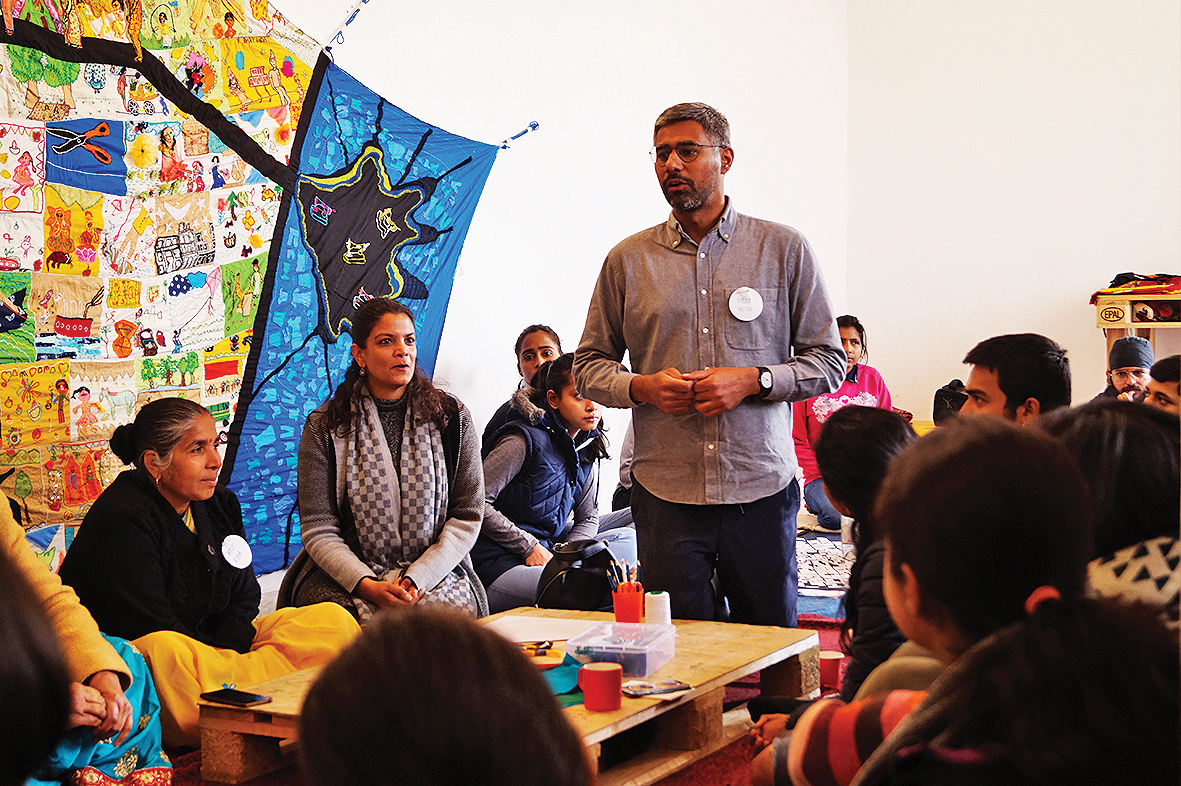
ART IS a powerful instrument of change for the better. It gives expression to the repressed, and many argue more authentic a reflection of the times than the written word. It’s also a safety valve, giving vent to pent-up emotions of a community or an individual. It’s also an effective tool to come to terms with one’s own reality vis-a-vis the rest of the world. The intensity of life churns out great literature and iconic art.
In a more contemporary setting of Delhi’s urban landscape, art has ameliorated the lives of working-class women in Kapashera, located along the Delhi-Gurgaon border, which is a settlement of about 2.5 lakh migrants from UP, Bihar and Bengal. They live in rented accommodation in this very congested locality. In the last 20 years, this locality has changed beyond recognition, from an agrarian village, (kapas hera literally means cotton settlement), transformed into a multi-ethnic tenement town with a rich diversity of languages, customs and culinary traditions. People work hard to make a paltry living in the factory and textile mills in the adjoining areas. Life is tough here.
A long-term socially engaged art project supported by Khoj International Artists Association facilitated by Sumedha Garg and Nitin Bathla started working in the settlement last year. Nitin Bathla is an architect, artist, researcher and educator currently pursuing doctoral research in ETH, Zurich. His work primarily focuses on labour migration, land ecology in the urban region of Delhi. Sumedha Garg is an artist, designer and educator. She uses art as a tool of connecting, expressing and healing. She has already met success in South Africa while working for two years with landless labourers, particularly women and children in the village of Naledi in Eagle Valley.
It all started last year when Nitin, while conducting research on urbanisation, decided to team up with Sumedha, and try to make a difference in the lives of people, beyond the call of duty as an academic. Sumedha started visiting the settlement and during chats with women and children, locals and migrants, got to know them better. Conversations were about ‘uncovering’, to talk about things that mostly remain unsaid.
And the social tension emanates from the fact that the landowner, mostly Yadavs of Kapashera, have made a fortune thanks to the rental economy that has flourished here for last decade, though the wages have of the workers, particularly in the garment industry, has taken a beating in real terms thanks to the inflationary spiral. Given the situation, it didn’t take Garg long to realise there’s class and gender-based exploitation and violence is commonplace here. Also, over the years, there has been a degradation of living conditions of migrants and an increase in racialisation and social surveillance. Also, women have no safe place to come meet, socialise and there’s no place for children to play in this “very dense colony.”
“It was challenging at first as there’s a diversity of publics within Kapashera. The locals are at odds with the migrants regarding anything to do with claim-making and citizenship. Thus, we were seen with suspicion at first,” reflects Bathla.
They hired a place which would allow for much-needed social engagement, called it Saat Saheliyan (seven friends), where women and children, after work and school respectively, come and enjoy their time together. This area being a textile belt, has a lot of wasted fabric–katran, as it’s called in local parlance. The women would collect katran and under Garg’s guidance use it to make artwork, to express “their inner worlds,” as Garg puts it. Many of them would sit and draw depicting stories of their life, home, factory, violence they endure in their day-to-day life.
Soon drawings were converted into elaborate embroidery on mosaic of patchwork. One of them titled ‘a planetary map of fast fashion’ is a 3×6 metre “cartographic tapestry that narrates spatial entanglements of commodities, capital and people, but also the journeys, desires, and collective memory of the women who embroidered it,” explains Garg.
Hundreds of women come and participate, and in the last six months, there has been a qualitative change in their life by being able to reflect on their life via art. The tension between the landowners and migrants has dissipated in some measure. Not just the women and children here, but also Bathla and Sumedha have experienced transformation. “It was really enriching to see cross-solidarities between the landowner and labour migrant women through art and stitching,” says Bathla.
Not just that, as Bathla puts it, “The whole experience has taught me to not be limited by dichotomies and to work in the world with more fluidly. And also, more importantly, it’s possible to bridge the gap between academics and practice.”
The alleged assault is linked to a dispute over some staff members allegedly cutting the…
This will play a decisive role in providing villagers with legal proof of ownership and…
Hired to take care of his employer's dather, he had only begun working in the…
On Friday, Delhi's AQI stood at 374, with 11 of the 40 monitoring stations in…
Sharma said accident relief trains, along with top officials from the divisional headquarters, have already…
A wide gap between exam failures and NIOS enrolments exposes persistent barriers to continuing education